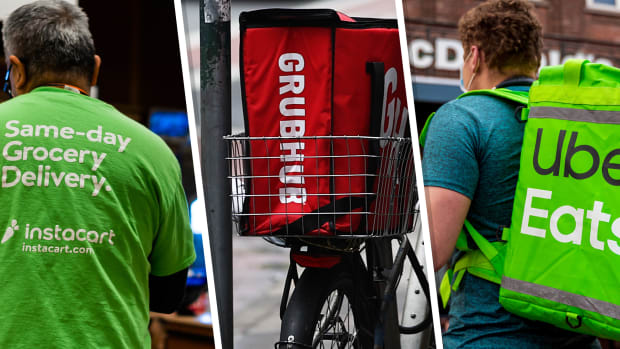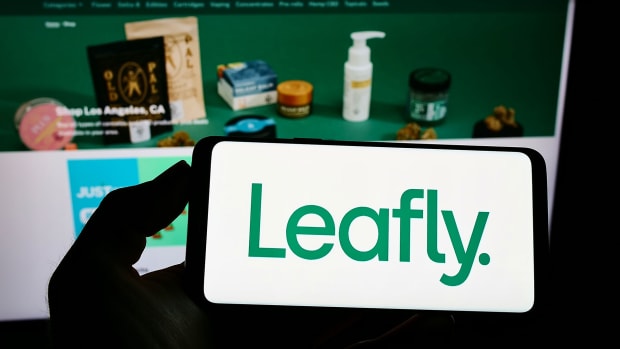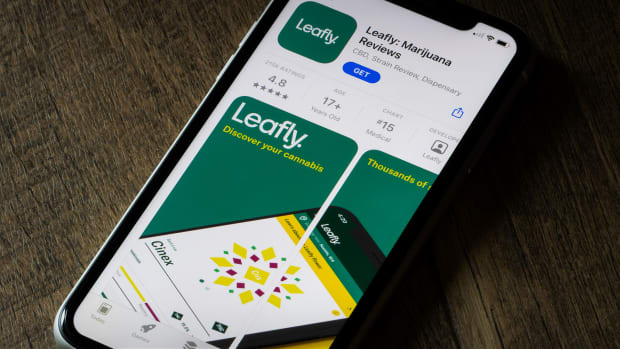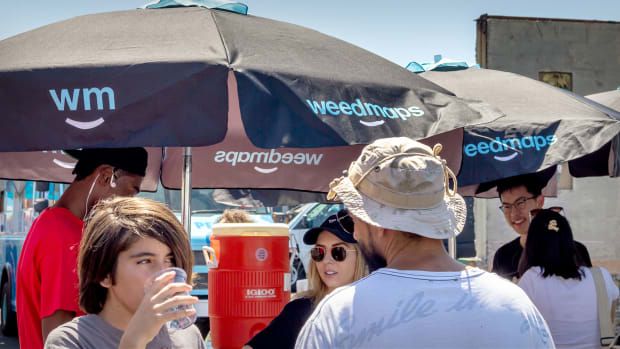With the limited amount of cannabis dispensaries in certain parts of the United States, it can become increasingly difficult to find said products (or they're just too far away). With the advancement of technology and the popularity of delivery services on the rise, now there's a new kind of item you can get dropped off at your front door: cannabis.
Grocery and Food Delivery Services
If you have had any run ins with famous food/grocery delivery services Instacart, GrubHub, DoorDash (DASH), or Uber Eats (UBER) then you know just how timely and almost essential they have become.

Shutterstock/Getty Images
These companies are doing well. Instacart, as of 2021, was valued at $39 billion. GrubHub garnered $2.1 billion in revenue in the year 2021, which is a 16% increase year over year. DoorDash has a net worth of around $4.67 billion. And in 2021, Uber Eats generated $8.3 billion in revenue, which is a 72% year-on-year increase.
Covid played a large role in why these delivery services have flourished. Similarly to Instacart, Walmart Grocery (WMT) and Shipt (TGT) also thrived in 2020, displaying large percentage surges.
Cannabis Delivery Services
With many U.S. states legalizing recreational marijuana, the number of dispensaries has been increasing: there are now over 7,490 in the U.S.. But, not everyone lives near a dispensary and many people want their goods to be delivered at their doorstep.
This is where cannabis delivery comes in, aka Instacart, but for weed.

Getty Images
According to the New York Times, deliveries accounted for approximately 55% of California's medical marijuana sales. And with the pandemic, demand went up, with one service's sales increasing 500% after California began its March quarantine orders.
Though there are other weed delivery services, two of the most significant and growing ones are Leafly (LFLY) and Weedmaps (MAPS).
Leafly

Shutterstock
Leafly is headquartered in Seattle, WA, and was founded in 2010. The brand is currently represented by CEO Yoko Miyashita. It's a website which offers delivery and pickup for various cannabis products from legal, licensed retailers. According to its website, over four million orders are placed annually, more than 4,600 retailers work with Leafly. There are over 1.3 million product reviews, and over 5,000 strains in its database.

Shutterstock
Leafly operates its business on both a website and an app. It also prides itself in education through independent journalism, allowing people to locate information and resources regarding cannabis and what is right for them. This is done through the Leafly Cannabis Guide.
The website has eight tabs: Delivery, Dispensaries, Deals, Strains, Products, CBD, Cannabis 101, and Social Impact. The site is easy to navigate, and once you enter your address, cannabis delivery is a click away.
Leafly's revenue was $43 million in 2021, which was up 18% over the full year 2020. Recently, Leafly announced plans to go public, merging with Merida Merge Corp. Following the announcement, Leafly's CEO Yoko Miyashita regarded this merger as a great accomplishment: “Backed by substantial funding, tremendous advancements in cannabis legalization and e-commerce tailwinds, we are relentlessly focused on investing in our technology, talent, and content to execute our growth strategy and create value for all stakeholders.”
Weedmaps

Shutterstock
Weedmaps, commonly referred to as WM Technology, was founded in 2008 by Justin Hartfield and Keith Hoerling. Its mission, as it says on its website, is "to power a transparent and inclusive global cannabis economy."

Shutterstock
Similarly to Leafly, Weedmaps is available as an app on iOS and Android, and also has its own website.
The company offers information regarding cannabis products, such as delivery options. It also offers educational cannabis information such as its history, usage, and legal status. Weedmaps also offers insights regarding scaling businesses for the cannabis industry.
The business, currently led by CEO Chris Bealshow, became public in June of 2021 with a value of $1.5 billion after merging with Silver Spike Acquisition Corp. In it's first quarter of 2022, Weedmaps' revenue grew 40% year-over-year to reach $57.5 million.







